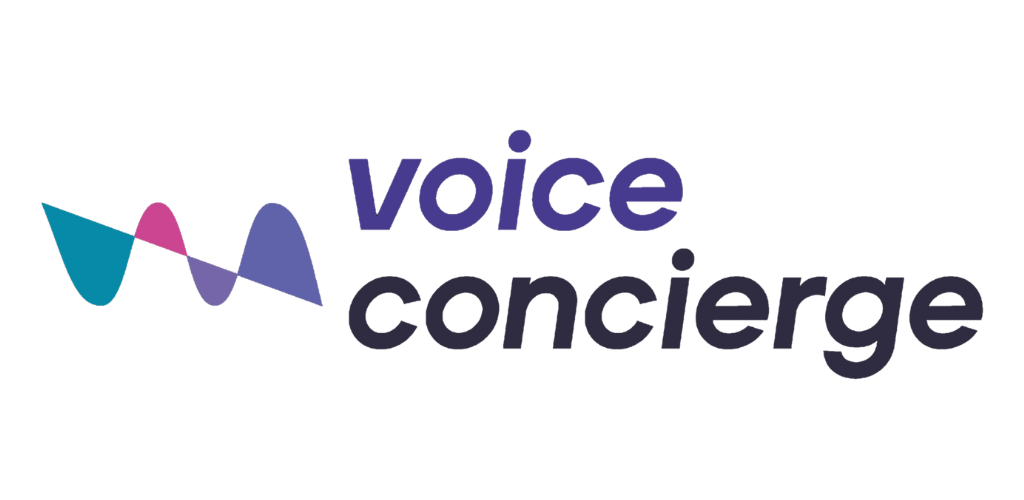Dialogare, letteralmente, con la tecnologia sta diventando sempre più un’abitudine quotidiana per molti utenti, perché permette di ottenere informazioni (ad. es. “Che cosa ho in calendario oggi?”) e compiere azioni (come “Metti nel carrello questo prodotto”).
Gli occhi e le mani sono finalmente libere e la comunicazione avviene in modo immediato e fluido.
Sono i dati a dare la prospettiva dell’evoluzione della voice technology.
Quello degli assistenti virtuali è il mercato tecnologico che nel mondo sta conoscendo la crescita più veloce. La tecnologia vocale è destinata a liberarci dagli schermi, restituendoci tempo e migliorando l’efficienza della nostra vita quotidiana.
Non solo: la Voice Technology offre interessanti opportunità di business.
La Voice Technology supera i nostri limiti e ci restituisce potenzialità enormi.
Gli assistenti sono in grado di migliorare costantemente le prestazioni, rispondendo in modo sempre più preciso e pertinente alle richieste delle persone.
l customer service è uno dei settori, insieme all’internet banking, in cui gli assistenti vocali possono essere efficaci da subito, riducendo il carico del personale dell’assistenza clienti su diversi touchpoint. Ma non solo: la voce può guidare gli utenti nei servizi di prenotazione, nel mondo del gaming e sugli e-commerce.
Se al momento vengono impiegati soprattutto nel customer service, gli assistenti vocali potrebbero col tempo migliorare le prestazioni aziendali anche in altri ambiti.
Basti pensare al rapporto tra colleghi o allo svolgimento di operazioni da HR. Per esempio la gestione delle tabelle orarie e dei turni di lavoro.
Un altro settore di futuro utilizzo per i sistemi IVR è quello della sicurezza.
Banche, istituti di credito o assicurazione e tutte le imprese che desiderano aggiungere un ulteriore livello di privacy possono puntare sulla sintesi vocale per il riconoscimento degli utenti.
Anche in ambito diagnostico o didattico la voice technology ha la possibilità di cambiare le vite di milioni di persone.
Già ad oggi assistenti vocali come quelli di Google e di Amazon possono segnalare problemi di salute, inviare segnali di soccorso, supportare lo studio di chi ha difficoltà di apprendimento e tanto altro. Un sistema di supporto che è destinato a crescere man mano che le tecnologie vocali vengono introdotte da aziende e istituzioni.
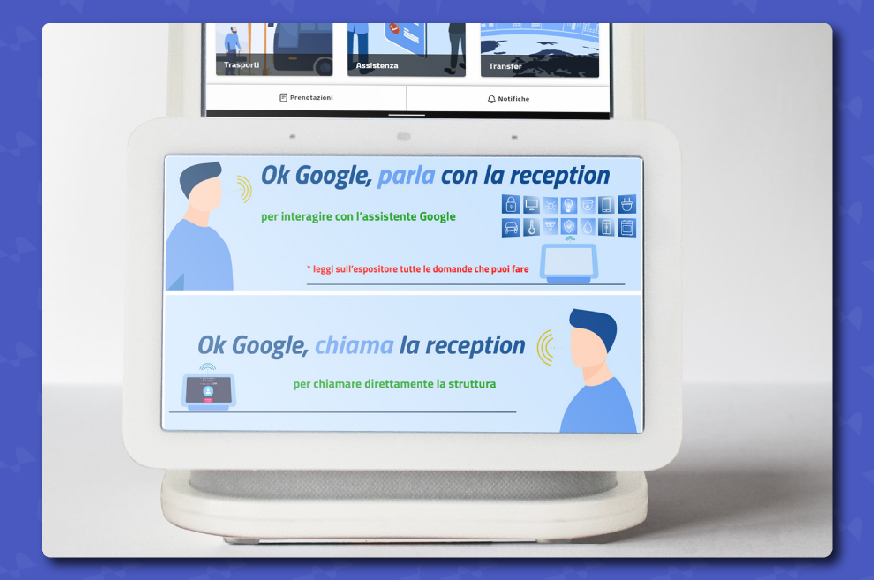
La Voce prende appuntamenti, dà informazioni su eventi ed è utile in modo speciale per la navigazione di chi è ipovedente. Puoi applicarla anche alla gestione dei flussi di lavoro del tuo ufficio per ottimizzare l’operatività.
Possiamo usare un dispositivo vocale ovunque: su un sito web, sullo smartphone, tramite smart speaker o app mobile in qualsiasi momento della nostra giornata.
È quindi lecito pensare che il ricorso ad assistenti vocali e altre tipologie di intelligenza artificiale basate sull’utilizzo della voce sia nei piani futuri di qualsiasi azienda, indipendentemente dal settore di business e dalle dimensioni.
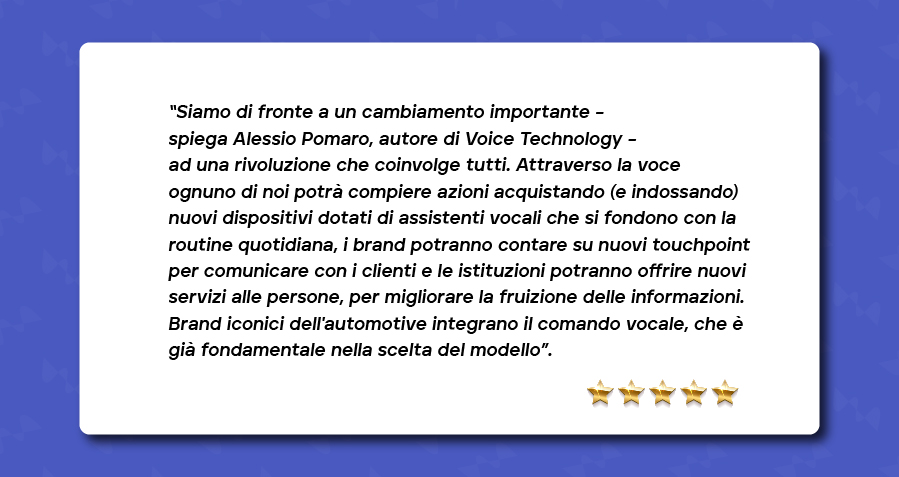
Tendenze e opportunità della Voice Technology per i brand
La voce al centro di un grande cambiamento comportamentale da parte dell’utente, accelerato dallo sviluppo tecnologico.
Gli utenti, abituati a digitare le ricerche – prima solamente sul pc, ora anche da
smartphone – hanno iniziato ad utilizzare un nuovo mezzo per interagire con la rete.
La storia della tecnologia e del marketing ci ha insegnato che quando una trasformazione implica il cambiamento del comportamento dell’utente, cambiano le regole del gioco, cambia il modo di fare marketing, cambia il prodotto stesso.
Integrando le app vocali nei proprio marketing le aziende hanno la possibilità di avere dati misurabili e un aumento dell’engagement.
Esistono studi che dimostrano come l’audio, rispetto al mondo visual, abbia un livello di coinvolgimento superiore, perché implica un’immaginazione attiva. Inoltre, i tempi sono ottimizzati, perché l’interazione avviene spesso tramite smartphone, che ormai è onnipresente durante la giornata delle persone.
In un mondo di assistenti vocali l’azienda – e la sua rappresentazione vocale – devono essere al servizio del target e assicurare riconoscibilità e fiducia. Non rendere il design della voce del brand troppo servile: ciò che conta è differenziarsi, assicurandosi un design intelligente artificialmente ma con una qualità umana. In questo modo si potrà stabilire una connessione con il pubblico di riferimento attraverso questo canale. Sta diventando sempre più importante cosa vuole sentirsi dire l’utente piuttosto che cosa si vuole dire.
Questo significa che prestare attenzione ai target – e questa è una possibilità che le piattaforme basate sulla tecnologia voice offriranno – diventerà sempre più una priorità.
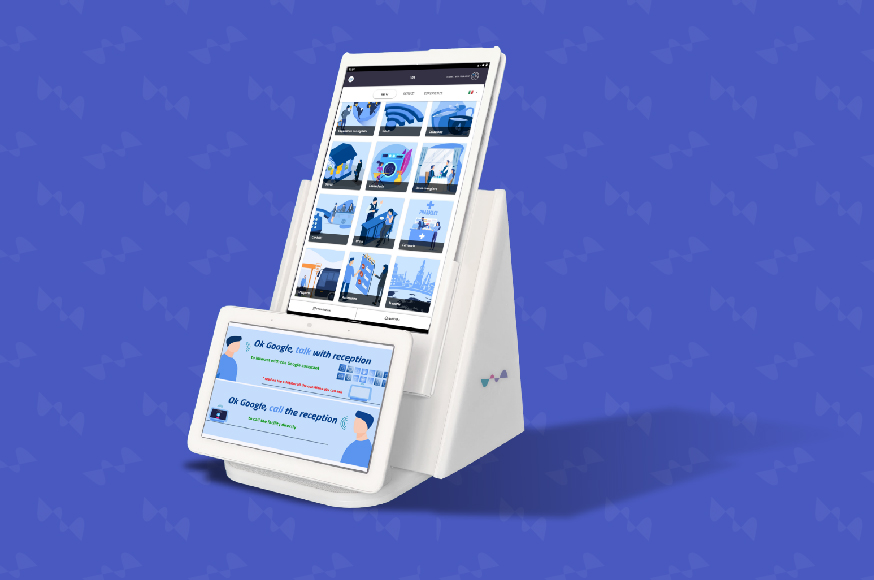
In conclusione, nel medio periodo la lingua diventerà più facile da usare per trovare informazioni, interagire con gli oggetti e accedere in sicurezza a servizi d’ogni genere, sia in consultazione che per attività dispositive. Ciò che limita la crescita del mercato sono l’accuratezza nel riconoscere alcuni accenti e i dialetti regionali ma lo sviluppo continuo di tecnologie e algoritmi avanzati, nonché la modalità di implementazione degli stessi all’interno dei processi di business complessi, stanno avendo una rapida accelerazione con importanti benefici e ricadute sull’intero segmento“Voice & Speech Recognition.
Dialogare, letteralmente, con la tecnologia sta diventando sempre più un’abitudine quotidiana per molti utenti, perché permette di ottenere informazioni (ad. es. “Che cosa ho in calendario oggi?”) e compiere azioni (come “Metti nel carrello questo prodotto”).
Gli occhi e le mani sono finalmente libere e la comunicazione avviene in modo immediato e fluido.
Sono i dati a dare la prospettiva dell’evoluzione della voice technology.
Quello degli assistenti virtuali è il mercato tecnologico che nel mondo sta conoscendo la crescita più veloce.
La tecnologia vocale è destinata a liberarci dagli schermi, restituendoci tempo e migliorando l’efficienza della nostra vita quotidiana.
Non solo: la Voice Technology offre interessanti opportunità di business.
La Voice Technology supera i nostri limiti e ci restituisce potenzialità enormi.
Gli assistenti sono in grado di migliorare costantemente le prestazioni, rispondendo in modo sempre più preciso e pertinente alle richieste delle persone.
l customer service è uno dei settori, insieme all’internet banking, in cui gli assistenti vocali possono essere efficaci da subito, riducendo il carico del personale dell’assistenza clienti su diversi touchpoint. Ma non solo: la voce può guidare gli utenti nei servizi di prenotazione, nel mondo del gaming e sugli e-commerce.
Se al momento vengono impiegati soprattutto nel customer service,
gli assistenti vocali potrebbero col tempo migliorare le prestazioni aziendali anche in altri ambiti.
Basti pensare al rapporto tra colleghi o allo svolgimento di operazioni da HR.
Per esempio la gestione delle tabelle orarie e dei turni di lavoro.
Un altro settore di futuro utilizzo per i sistemi IVR è quello della sicurezza.
Banche, istituti di credito o assicurazione e tutte le imprese che desiderano aggiungere un ulteriore livello di privacy possono puntare sulla sintesi vocale per il riconoscimento degli utenti.
Anche in ambito diagnostico o didattico la voice technology ha la possibilità di cambiare le vite di milioni di persone.
Già ad oggi assistenti vocali come quelli di Google e di Amazon possono segnalare problemi di salute, inviare segnali di soccorso, supportare lo studio di chi ha difficoltà di apprendimento e tanto altro.
Un sistema di supporto che è destinato a crescere man mano che le tecnologie vocali vengono introdotte da aziende e istituzioni.

La Voce prende appuntamenti, dà informazioni su eventi ed è utile in modo speciale per la navigazione di chi è ipovedente. Puoi applicarla anche alla gestione dei flussi di lavoro del tuo ufficio per ottimizzare l’operatività.
Possiamo usare un dispositivo vocale ovunque: su un sito web, sullo smartphone, tramite smart speaker o app mobile in qualsiasi momento della nostra giornata.
È quindi lecito pensare che il ricorso ad assistenti vocali e altre tipologie di intelligenza artificiale basate sull’utilizzo della voce sia nei piani futuri di qualsiasi azienda, indipendentemente dal settore di business e dalle dimensioni.

La voce al centro di un grande cambiamento comportamentale da parte dell’utente, accelerato dallo sviluppo tecnologico.
Gli utenti, abituati a digitare le ricerche – prima solamente sul pc, ora anche da
smartphone – hanno iniziato ad utilizzare un nuovo mezzo per interagire con la rete.
La storia della tecnologia e del marketing ci ha insegnato che quando una trasformazione implica il cambiamento del comportamento dell’utente, cambiano le regole del gioco, cambia il modo di fare marketing, cambia il prodotto stesso.
Integrando le app vocali nei proprio marketing le aziende hanno la possibilità di avere dati misurabili e un aumento dell’engagement.
Esistono studi che dimostrano come l’audio, rispetto al mondo visual, abbia un livello di coinvolgimento superiore, perché implica un’immaginazione attiva. Inoltre, i tempi sono ottimizzati, perché l’interazione avviene spesso tramite smartphone, che ormai è onnipresente durante la giornata delle persone.
In un mondo di assistenti vocali l’azienda – e la sua rappresentazione vocale – devono essere al servizio del target e assicurare riconoscibilità e fiducia. Non rendere il design della voce del brand troppo servile: ciò che conta è differenziarsi, assicurandosi un design intelligente artificialmente ma con una qualità umana. In questo modo si potrà stabilire una connessione con il pubblico di riferimento attraverso questo canale. Sta diventando sempre più importante cosa vuole sentirsi dire l’utente piuttosto che cosa si vuole dire.
Questo significa che prestare attenzione ai target – e questa è una possibilità che le piattaforme basate sulla tecnologia voice offriranno – diventerà sempre più una priorità.

In conclusione, nel medio periodo la lingua diventerà più facile da usare per trovare informazioni, interagire con gli oggetti e accedere in sicurezza a servizi d’ogni genere, sia in consultazione che per attività dispositive. Ciò che limita la crescita del mercato sono l’accuratezza nel riconoscere alcuni accenti e i dialetti regionali ma lo sviluppo continuo di tecnologie e algoritmi avanzati, nonché la modalità di implementazione degli stessi all’interno dei processi di business complessi, stanno avendo una rapida accelerazione con importanti benefici e ricadute sull’intero segmento“Voice & Speech Recognition.
Dialogare, letteralmente, con la tecnologia sta diventando sempre più un’abitudine quotidiana per molti utenti, perché permette di ottenere informazioni (ad. es. “Che cosa ho in calendario oggi?”) e compiere azioni (come “Metti nel carrello questo prodotto”).
Gli occhi e le mani sono finalmente libere e la comunicazione avviene in modo immediato e fluido.
Sono i dati a dare la prospettiva dell’evoluzione della voice technology.
Quello degli assistenti virtuali è il mercato tecnologico che nel mondo sta conoscendo la crescita più veloce. La tecnologia vocale è destinata a liberarci dagli schermi, restituendoci tempo e migliorando l’efficienza della nostra vita quotidiana.
Non solo: la Voice Technology offre interessanti opportunità di business.
La Voice Technology supera i nostri limiti e ci restituisce potenzialità enormi.
Gli assistenti sono in grado di migliorare costantemente le prestazioni, rispondendo in modo sempre più preciso e pertinente alle richieste delle persone.
l customer service è uno dei settori, insieme all’internet banking, in cui gli assistenti vocali possono essere efficaci da subito, riducendo il carico del personale dell’assistenza clienti su diversi touchpoint. Ma non solo: la voce può guidare gli utenti nei servizi di prenotazione, nel mondo del gaming e sugli e-commerce.
Se al momento vengono impiegati soprattutto nel customer service, gli assistenti vocali potrebbero col tempo migliorare le prestazioni aziendali anche in altri ambiti.
Basti pensare al rapporto tra colleghi o allo svolgimento di operazioni da HR. Per esempio la gestione delle tabelle orarie e dei turni di lavoro.
Un altro settore di futuro utilizzo per i sistemi IVR è quello della sicurezza.
Banche, istituti di credito o assicurazione e tutte le imprese che desiderano aggiungere un ulteriore livello di privacy possono puntare sulla sintesi vocale per il riconoscimento degli utenti.
Anche in ambito diagnostico o didattico la voice technology ha la possibilità di cambiare le vite di milioni di persone.
Già ad oggi assistenti vocali come quelli di Google e di Amazon possono segnalare problemi di salute, inviare segnali di soccorso, supportare lo studio di chi ha difficoltà di apprendimento e tanto altro. Un sistema di supporto che è destinato a crescere man mano che le tecnologie vocali vengono introdotte da aziende e istituzioni.
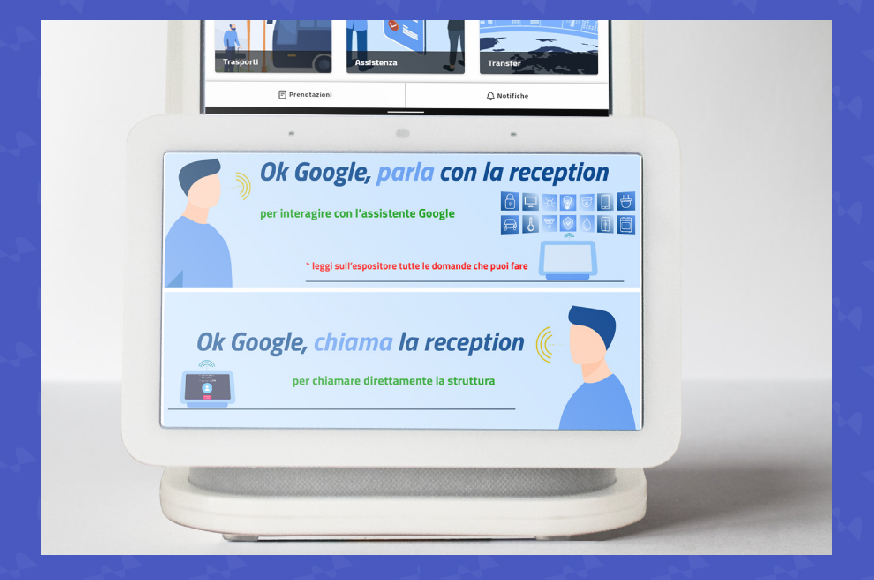
La Voce prende appuntamenti, dà informazioni su eventi ed è utile in modo speciale per la navigazione di chi è ipovedente. Puoi applicarla anche alla gestione dei flussi di lavoro del tuo ufficio per ottimizzare l’operatività.
Possiamo usare un dispositivo vocale ovunque: su un sito web, sullo smartphone, tramite smart speaker o app mobile in qualsiasi momento della nostra giornata.
È quindi lecito pensare che il ricorso ad assistenti vocali e altre tipologie di intelligenza artificiale basate sull’utilizzo della voce sia nei piani futuri di qualsiasi azienda, indipendentemente dal settore di business e dalle dimensioni.
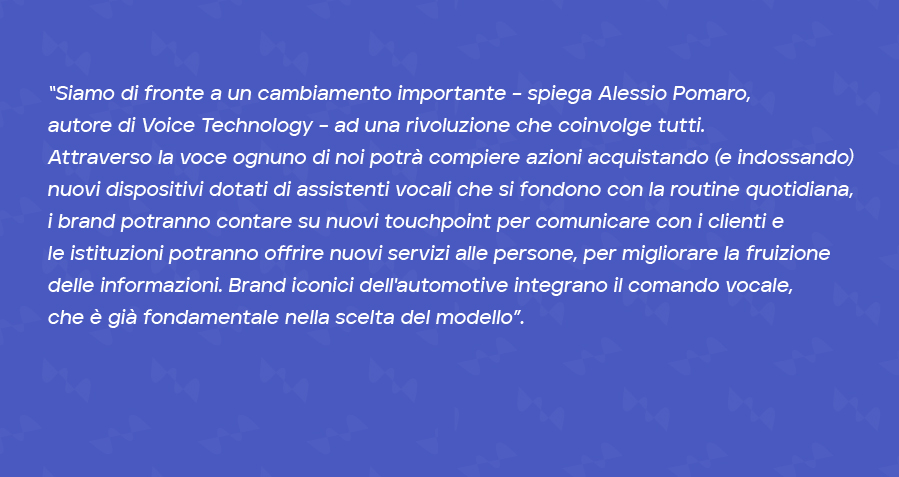
Tendenze e opportunità della Voice Technology per i brand
La voce al centro di un grande cambiamento comportamentale da parte dell’utente, accelerato dallo sviluppo tecnologico.
Gli utenti, abituati a digitare le ricerche – prima solamente sul pc, ora anche da
smartphone – hanno iniziato ad utilizzare un nuovo mezzo per interagire con la rete.
La storia della tecnologia e del marketing ci ha insegnato che quando una trasformazione implica il cambiamento del comportamento dell’utente, cambiano le regole del gioco, cambia il modo di fare marketing, cambia il prodotto stesso.
Integrando le app vocali nei proprio marketing le aziende hanno la possibilità di avere dati misurabili e un aumento dell’engagement.
Esistono studi che dimostrano come l’audio, rispetto al mondo visual, abbia un livello di coinvolgimento superiore, perché implica un’immaginazione attiva. Inoltre, i tempi sono ottimizzati, perché l’interazione avviene spesso tramite smartphone, che ormai è onnipresente durante la giornata delle persone.
In un mondo di assistenti vocali l’azienda – e la sua rappresentazione vocale – devono essere al servizio del target e assicurare riconoscibilità e fiducia. Non rendere il design della voce del brand troppo servile: ciò che conta è differenziarsi, assicurandosi un design intelligente artificialmente ma con una qualità umana. In questo modo si potrà stabilire una connessione con il pubblico di riferimento attraverso questo canale. Sta diventando sempre più importante cosa vuole sentirsi dire l’utente piuttosto che cosa si vuole dire.
Questo significa che prestare attenzione ai target – e questa è una possibilità che le piattaforme basate sulla tecnologia voice offriranno – diventerà sempre più una priorità.

In conclusione, nel medio periodo la lingua diventerà più facile da usare per trovare informazioni, interagire con gli oggetti e accedere in sicurezza a servizi d’ogni genere, sia in consultazione che per attività dispositive. Ciò che limita la crescita del mercato sono l’accuratezza nel riconoscere alcuni accenti e i dialetti regionali ma lo sviluppo continuo di tecnologie e algoritmi avanzati, nonché la modalità di implementazione degli stessi all’interno dei processi di business complessi, stanno avendo una rapida accelerazione con importanti benefici e ricadute sull’intero segmento“Voice & Speech Recognition.
